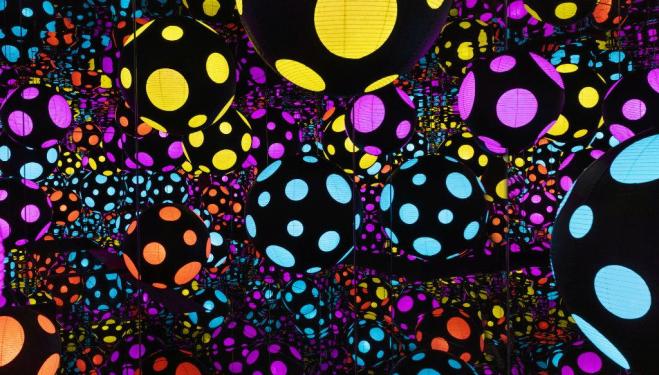
Lucian Freud
With rolls of flesh spilling about the canvas, Lucian Freud's work is ruthless. His scrutinising gaze penetrates the physicality of his sitters. His graceful curvilinear lines rarely soften the blow of an unforgiving reality. His fully frontal nudes are sensual, yet intimate, visceral even: they demand your attention the moment you walk in the room. Born almost twenty years earlier than Freud, Francis Bacon's figurative works have a similar charge. Often distorting the human form to an unsettling effect, Bacon's work explores the isolated figure, the existential condition, and the trauma of loss, death and war in the most brutal of ways.
Hanging at the heart of Tate Britain's striking survey of modern figurative painting spanning the last 100 years are works by both these titans of Modern British art. Freud's Sleeping by the Lion Carpet, 1996, stops you in your tracks. This tangibly fleshy nude of Big Sue – one of Freud's favourite plus sized models – asks us to look at life from life in a frank and starkly analytical way. Observed, scrutinized, and exposed to critique, Sue is laid bare. In his broad brush strokes, Freud chronicles the voluminous presence of her naked body with an aggressive accuracy that startles. She is not idealised, but realised; this is twentieth-century figurative painting at its most powerful.
Capturing the 'intense experience of life in paint', Freud, Bacon and other famous School of London painters including Frank Auerbach and Leon Kossoff expose the intricate psychological and physical complexities of the human condition.

Francis Bacon, Study for Portrait of Lucian Freud, 1964
We are engulfed by the sorrow, pain, fear and loss experienced by the sitters populating the portraits on display. Bacon's angst-ridden depiction of a contorted and disfigured human body (Freud), bare chested and curled into the corner of a dark room beneath a single light bulb, projects human estrangement, isolation and vulnerability as tangible, material things. Shown for the first time in public since 1964, Study for Portrait of Lucian Freud chills to the core.
But there are plenty of landscapes, too. Drawn from life, the cityscapes painted by Bomberg, Auerbach and Kossoff demand a scrutiny and appreciation usually reserved for portraiture. Critical of the traditional observational methods, Bomberg insisted on conveying 'the tactile experience of objects and their mass, emphasising the structure and underpinning visual forms', says the exhibition's curator Elena Crippa. Applying the paint in thick daubs, Bomberg's paintings of his beloved London take on a sculptural quality. The cranes, the churches, the buildings protude from the frame: Bomberg's pleasure in the medium is palpable. Again, we see life from life observed through a new lens.
But the exhibition narrative goes beyond these Modern British greats. Looking to earlier generations, All Too Human opens with influential works by Walter Sickert, Chaïm Soutine and Stanley Spencer – artists spearheading a trend for portraying an intimate, subjective and tangible reality in the early years of the twentieth century – and closes with a selection of phenomenal works by contemporary male and female artists influenced by the great figurative artists before them.
At once intense, immediate and insightful, this brave exhibition paints a broader and longer story of twentieth-century figurative painting. It may require stamina, but it's bold, challenging and utterly captivating. It's a total triumph.
| What | Review: All Too Human: Bacon, Freud and a Century of Painting Life, Tate Britain, |
| Where | Tate Britain, Millbank, London, SW1P 4RG | MAP |
| Nearest tube | Pimlico (underground) |
| When |
28 Feb 18 – 27 Aug 18, 10:00 AM – 6:00 PM |
| Price | £16.80 |
| Website | Click here for more information |



